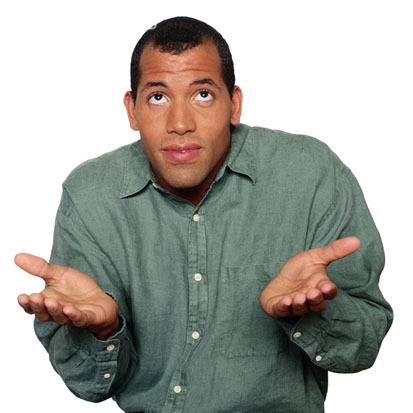Today, we return to the subject of successful public speaking centering on the physical message of presentation.Some call this 'body language.' Charles LeBeau is a professor of public speaking and has written several books about how to do it well.Mr. LeBeau tells VOA that body language includes posture, eye contact and gestures - how you move your hands or arms.
今天,我们将话题回归到成功的公众演讲,并以演讲过程中的肢体信息为中心。有人称其为“肢体语言”。Charles LeBeau是公众演讲的博士,著有几本提高公众演讲技能的书籍。LeBeau先生接受VOA采访时说道,肢体语言包括姿态、眼神交流以及手势,即移动手臂的方式。
For the physical message, a lot of non-native presenters are going to have problems with posture, and eye contact, and gestures. I think a lot of this comes from nervousness. Not only are they nervous because they're doing a presentation, but in addition to that they're really nervous because of their English, and their lack of confidence, lack of experience in their English.They're trying to figure out the grammar, what I want to say, and they're having all kinds of difficulty doing that, and also controlling their body."
“至于肢体,很多非本土演讲人在姿态、眼神交流以及手势方面都有问题。我认为这主要是因为紧张。紧张不仅因为他们正在做演讲,还因为自己的英语,因为缺乏自信,缺少使用英语的经验而紧张。他们试着克服语法问题,我想说的是,在此过程以及控制肢体方面,他们都面临着诸多困难。”

We have all seen nervous presenters in classrooms and meetings.One effect of being nervous is moving from side to side. A presenter does not need to stand perfectly still. In fact an audience can lose interest in a speaker who does not move.
在教室以及会议上,我们都见过一些紧张的演讲人。紧张的一个表现是来回走动。演讲人并不一定要完全站立不动。实际上,若演讲人站立不动,观众就会失去兴趣。
How a speaker moves is important. Whole-body movement should be slow and planned to command attention. Such movement helps to communicate confidence.
演讲人怎样移动非常重要。整个身体的移动须缓慢进行,并能吸引注意力。这类移动有助于传达自信。
New public speakers know that they should look at the audience while they speak.But they look at their notes on a paper or at the screen if they have an electronic presentation.
虽然新的公众演说家知道做演讲时,须面朝观众。但是他们会盯着自己的笔记,电子展示时则会盯着屏幕。
With posture, the typical problem that I see is that they are often moving back and forth, and they're not facing the audience.They'll often be facing the white board or the screen with slides and be talking to that rather than talking to the audience.Same thing with eye contact – they find it really, really difficult - some of them find it really difficult - making eye contact with the audience,because they'll be looking at their notes, they'll be looking at their computer, they'll be looking at the screen, they will be looking at the floor.The problem of having notes, and trying to talk from notes , often is a big problem.So they have trouble with eye contact."
“我认为关于姿态方面,最典型的问题就是演讲人通常来回走动,并且不是面向观众。他们通常是面向白板或者有幻灯片的屏幕,似乎是与它们交谈,而非是与观众交流。眼神交流也有同样的问题。有些人觉得与观众进行眼神交流确实非常非常困难,因为他们看笔记,看电脑,看屏幕,看地板。持稿演讲以及读稿是个大问题。因此他们很难做到眼神交流。”
Charles LeBeau says the best way to avoid this problem is to use images and few words for notes instead of sentences. The image should help communicate the point you want to make. Writing a few words with the image on your slide helps you remember that point. Then you can look at the audience while speaking.
Charles LeBeau说避免这些问题最好的方法就是用图片以及若干文字代替笔记中的句子。图片有助于传达你想强调的重点。配合图片的文字有助于你牢记该点。这样在演讲时,你就可以面向观众了。
Another problem I've noticed is oftentimes there'll be a lot of sentences or words on the slides and no images.So I think the key is if they can figure out what images to use that will communicate their message, because the images will communicate faster and more clearly than words."
“另外一个问题是,我注意到很多时候幻灯片上有很多句子或文字但是没有图片。因此,我认为关键在于演讲人能否找到代替这些文字的图片,因为与文字相比,图片能更加快速更加清晰的传达信息。”
Holding on to notes also makes it more difficult for a speaker to gesture naturally.Mr. LeBeau's book, "Speaking of Speech," discusses this.He says gestures should support the point the speaker is making. For example, when talking about three ideas, hold up three fingers to introduce them. Then hold up one finger while explaining the first idea, two fingers for the second, and so on.
紧握发言稿,就很难自然地表达出来。LeBeau先生所著的《谈及演讲》就对该问题进行探讨。他表示手势应当支持并支撑演讲人强调的重点。比如,谈及三个观点时,伸出三指手指介绍。介绍第一点时,伸出一指手指,介绍第二点时,伸出两只手指等等。
Other experts advise moving your body to a different place for each idea.Stay in place until you finish making that point. Then move to the next place on the stage or in the room.Mr. LeBeau says a good way to change your body language is to make a video of your presentation and watch yourself. This helps you to become aware of what you need to change.
其他专家建议每讲述一个观点换一个位置。讲述完一个观点之前不离开这个位置。然后换至舞台或者房间的下一个位置。LeBeau先生表示改变肢体语言的一个好方式就是制作并观看自己的演讲录像。这有助于发现需要改进的地方。
I find often times, the gestures don't look natural. They are poorly delivered, or they are just nonexistent. Students can video themselves, and then look at it, they can clearly see: Oh, My! I had no idea that I looked like that! My posture! I'm moving all over the place.Look at my hips. It's going back and forth and back and forth.And my eye contact! All of these other goofy things that I'm doing without noticing it, or thinking that 'well, it's not such a big deal.' But if I can see it I can realize 'ok, I see, I see, I see what I'm doing.' I think that helps them change more quickly. So they can do their presentation again, and work on changing, then they can compare, and they can see that they can make quick improvement."
“我经常发现,手势不自然。它们并未将信息传达到位或者根本没有手势。学生也能制作并观看自己的演讲视频,然后他们就会明白:天哪!我根本不知道我竟是这样子的。看我的姿势,我好像在乱动。看我的臀部,总是来来回回乱动。'还有眼神交流我根本没有注意到我会做这些傻事或者觉得这些根本不重要。'但是,如果能看到我就能意识到了。'我看到我的表现了,看到了。'我认为这能帮他们更快的作出改变。因此他们可以再做次演讲,注意应改之处,然后进行比对,就会发现他们能迅速作出改变。”
An important part of public speaking is practice. When you practice remember these important tips: Be aware of your posture, eye contact, and gestures. Record yourself using a phone, tablet, or camera. Watch yourself and plan what you will do to improve.
公众演讲很重要的一部分就是训练。训练时须谨记三点:注意自己的姿态、眼神交流以及手势;用手机、平板电脑或摄像机进行记录;观看视频并找出须改进的地方。
Look for opportunities to speak and gain more confidence.Mr. LeBeau says his students find the physical message the easiest thing to change in order to become a better presenter.
寻找做演讲的机会,获得更多自信。LeBeau表示他的学生发现,要想成为更好的演讲家,肢体语言是最易改变的。
The first thing that we deal with is the physical message.And the reason we do that is so students can have a real positive experience really quickly. You know, I looked like this in the beginning .And now, after one day, or a couple of classes, now I look like this - I do look much better!I think it helps them feel more positive about the experience.It helps them see that 'yes, I can do this, I can look confident.' So, I think that it's the easiest to change, and maybe the most important thing to deal with first."
“我们首先要注意的就是肢体语言。我们这么做便于学生得到真正迅速的积极体验。我知道我之前看起来是这样的。但是现在,经过一天或者几堂课之后,我现在是这样的——看起来确实是好多了。我认为他们可以从这些经历中体会更多积极方面。有助于他们明白“我可以做这些,我可以看起来非常自信。”因此,我认为这是最容易改的,或许也是首先要做的最重要的事。”
In our next Speaking Tips, we will look at the visual message, the visual aids you show the audience, and the story message, how to organize the ideas you present.
下个演讲技巧栏目,我们将讲述视觉信息以及组织信息。视觉信息可帮助你对观众做展示。组织信息则是关于如何组织你要讲述的观点。
本栏目视频字幕与文本并不完全对应,且视频播放缓冲时间较长,敬请谅解!












